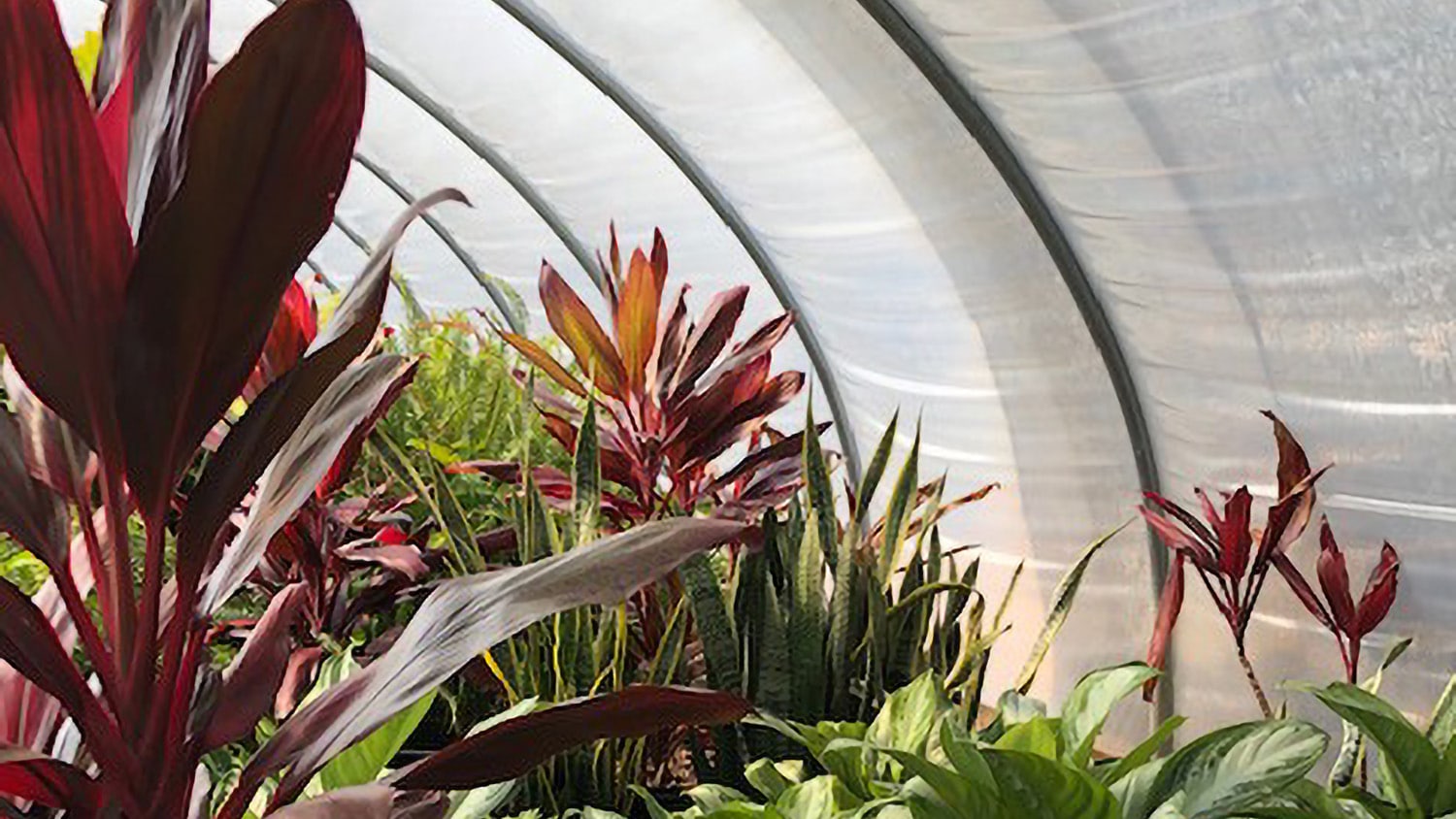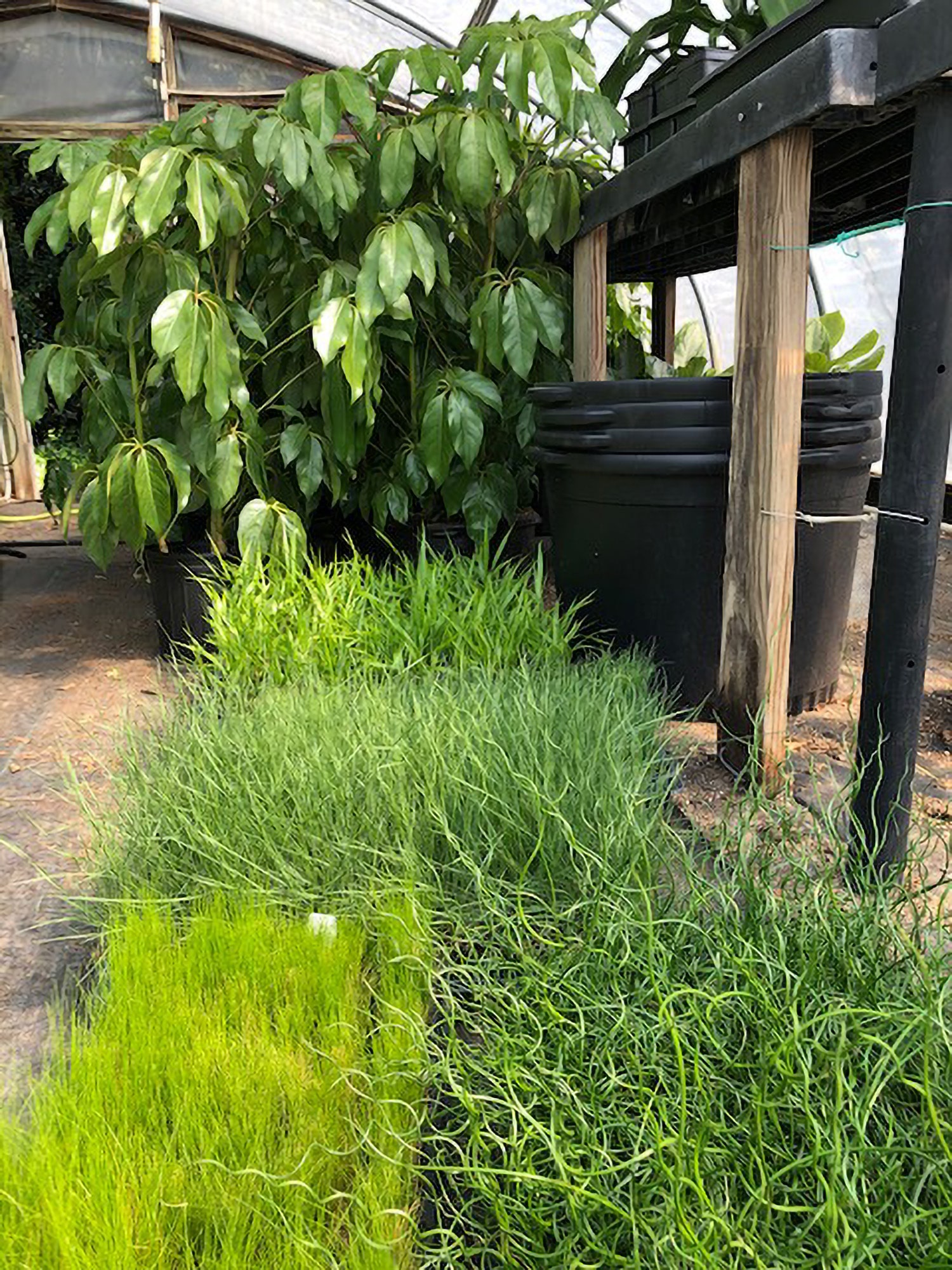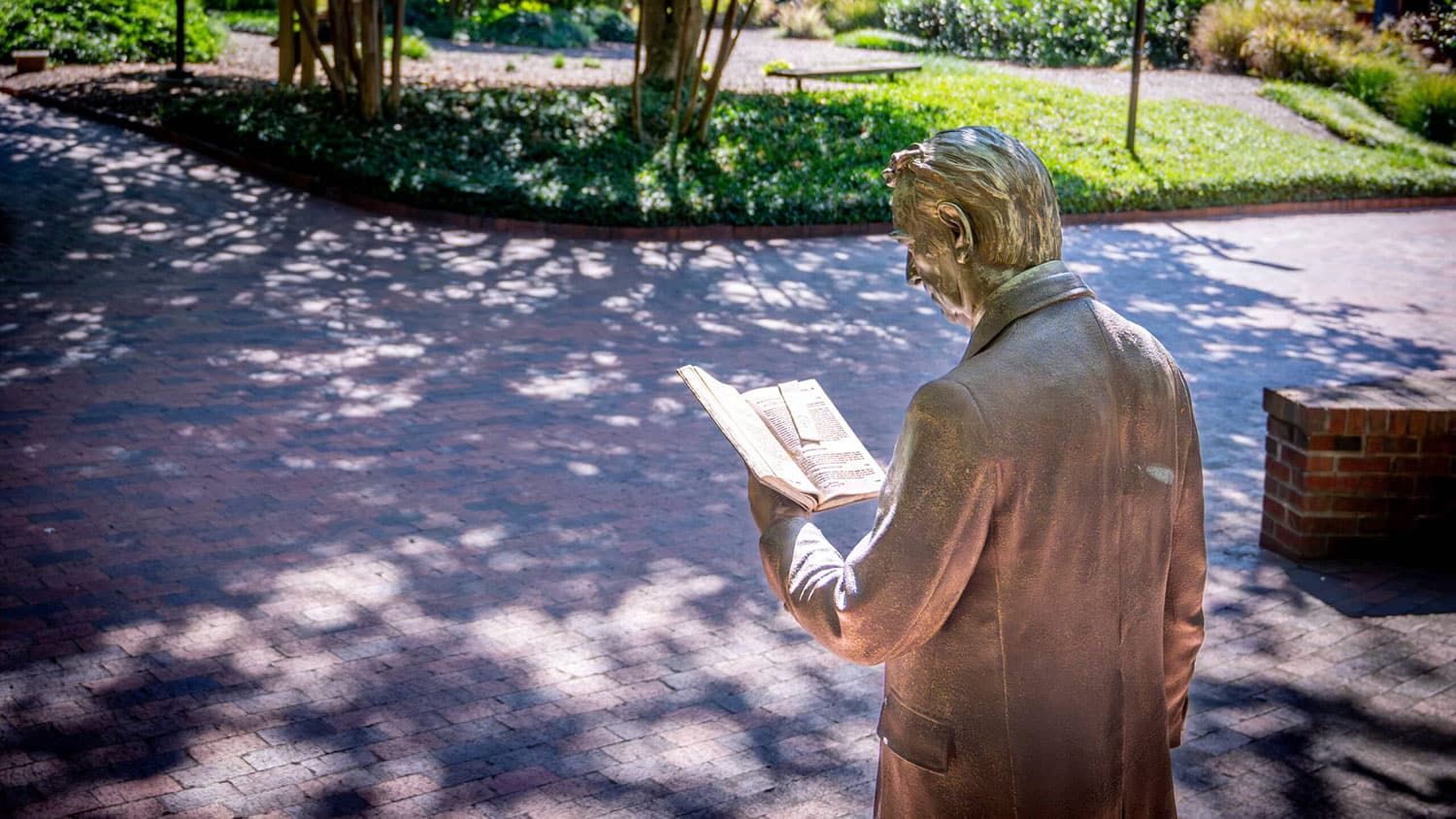Greenhouse Effect: A More Sustainable Campus
Grounds Services is saving money and boosting sustainability by growing flowers and plants in its own greenhouse on the west side of campus.

When students returned to NC State earlier this week, maybe they noticed a little more color on campus.
After more than a year of relative dormancy as most students and staff took a break from on-campus activities and stuck-at-home gardeners depleted the supply of available plants, campus growing spaces were a little bleak and overgrown.
“It kind of resembled a jungle,” says Courtney Eads, the horticulture supervisor for Grounds Services. “We just had to tackle it, put in a lot of work. The first day was overwhelming.”
That task will be made a little easier — not to mention less expensive and more sustainable — because recently Ground Services opened its own greenhouse on campus. For years, the staff has wanted a winter growing location for flats of the pansies, Lamium and snapdragons that they use to beautify the brick and open spaces that students, staff and faculty pass by every day.
Currently, Grounds Services is growing about 25% of the annuals planted on campus and working in the direction to grow 50% of the perennials, buying the rest from local suppliers. Moving forward they would like to work with student classes and sustainability stewards to increase the amount being grown in-house for campus projects.
Working with the College of Agriculture and Life Sciences, Grounds Services acquired earlier this summer a high-demand greenhouse located at the Horticulture Field Labs on the west side of main campus. Now those folks who add living color to the community not only have indoor growing space, but also an outdoor growing area and a little room for expansion.
“This is a great first step,” Eads says.
Ground Services can use the space to grow plants from seeds, plugs and cuttings instead of buying them from plant wholesalers. Plus, warm-weather plants can grow larger in a greenhouse environment during the winter, so Ground Services will no longer have to spend top dollar for larger potted tropical plants.

A partnership with Grounds Services will bring indoor plants to the places most students see every day: the Talley Student Union, Carmichael Gymnasium and the Witherspoon Student Center.
Another benefit is the idea of adding a horticulture internship program for students looking to get ground-level growing experience.
Eads would like to work on growing more perennial plants like Asclepias, Echinacea and Nepeta, which are not only pollinator plants but are less costly and more sustainable because they don’t have to be replaced every year, thanks to a $7,100 grant Ground Services received from the Sustainability Fund. Those funds will go towards pots, soils, plugs and planting supplies, Eads says.
And the future could be even brighter: Eads says another greenhouse could be added adjacent to the current one at a cost of between $25,000 and $30,000.
“The big picture for us is we would like to maximize our current greenhouse space and add to it in the future so that we can grow more of the plants we use on campus,” she says.
- Categories:


